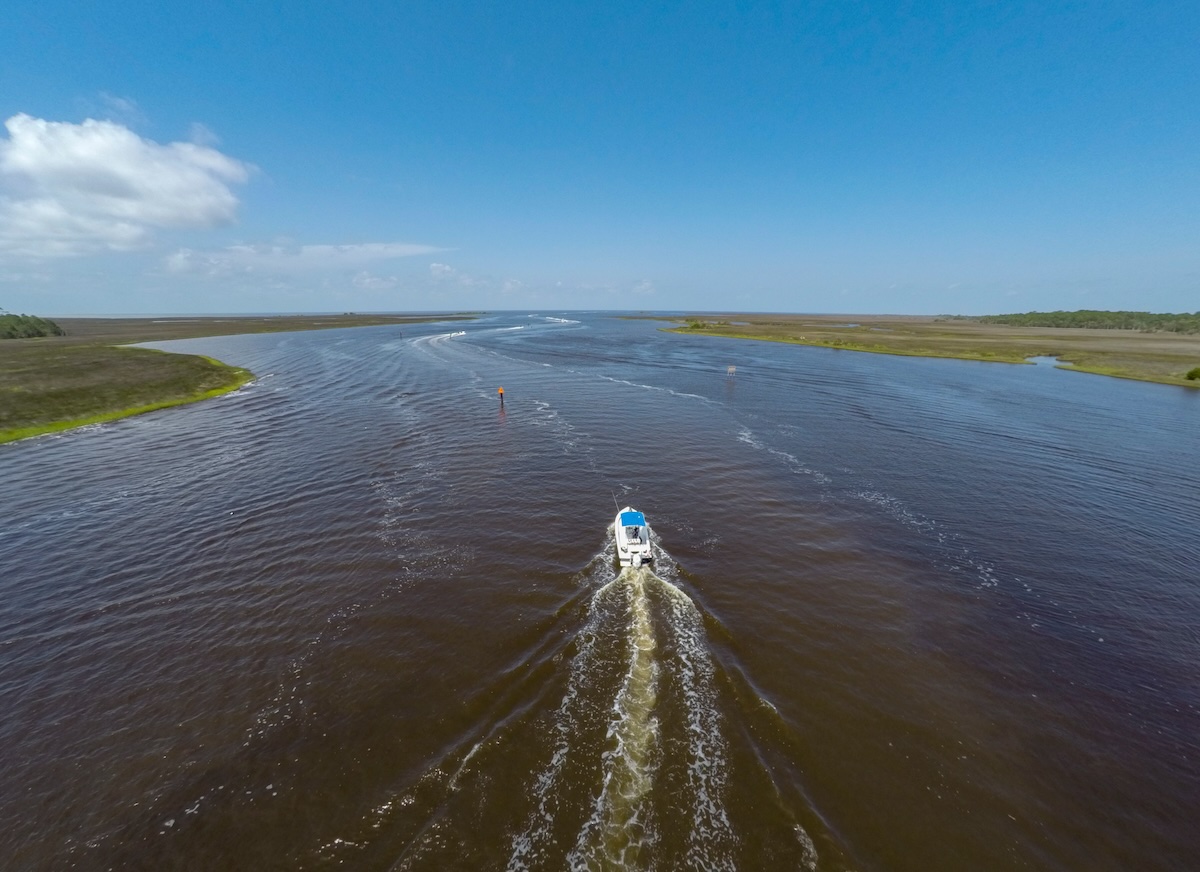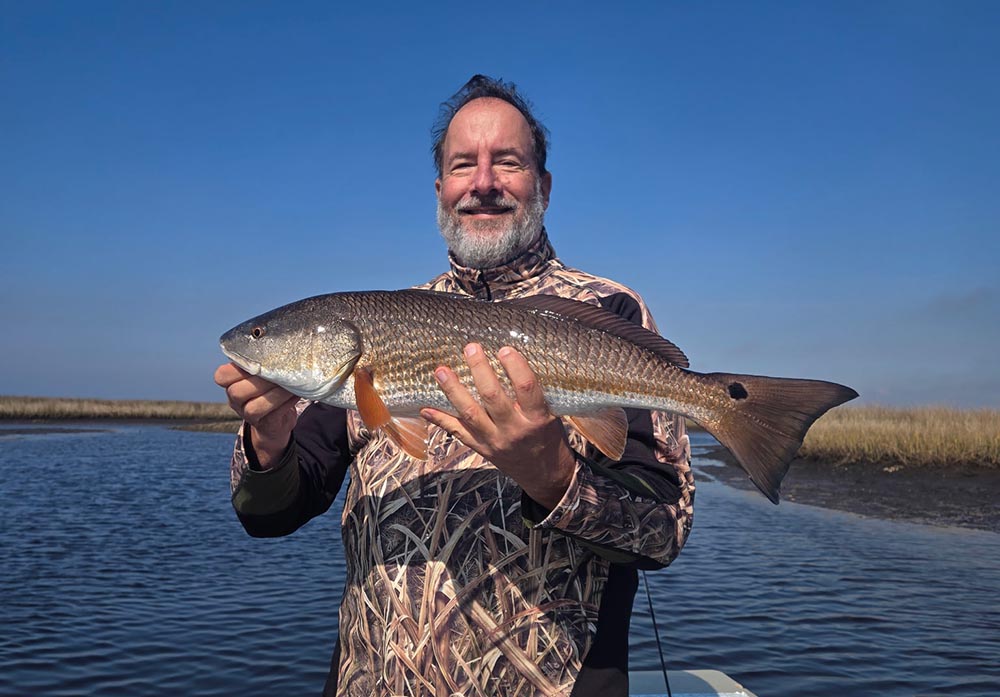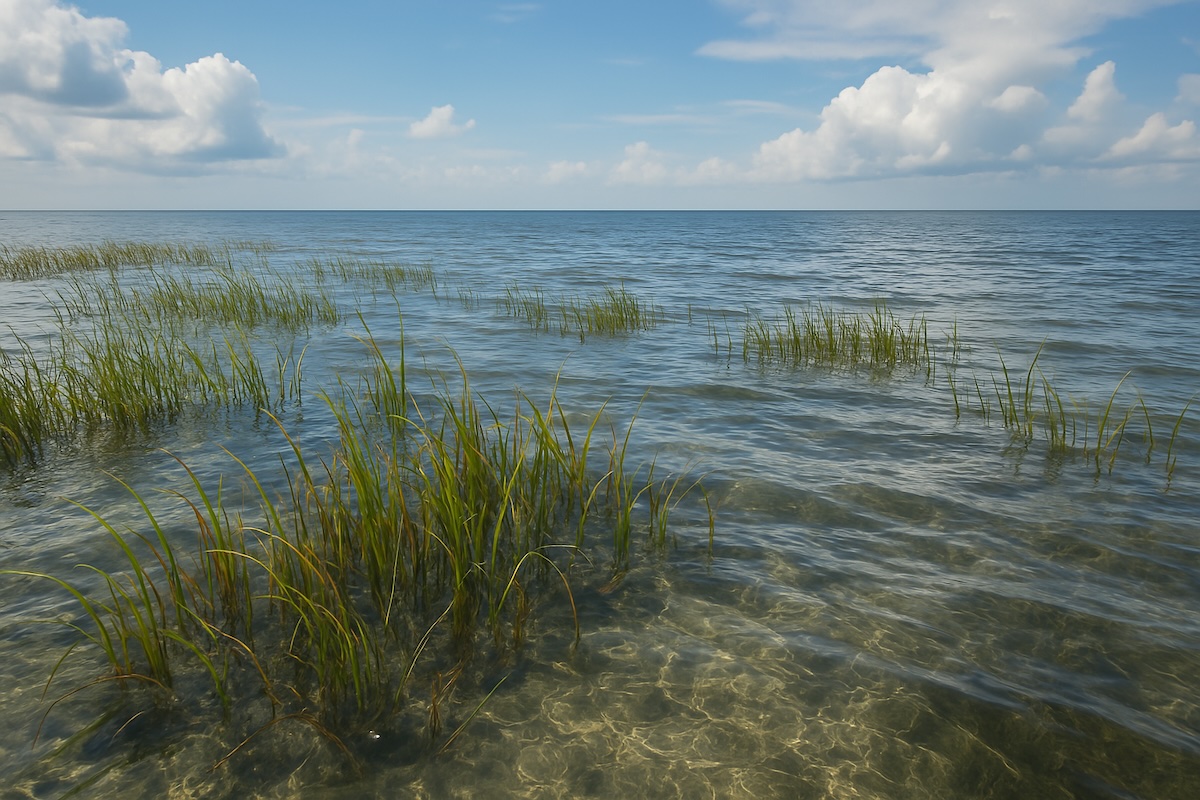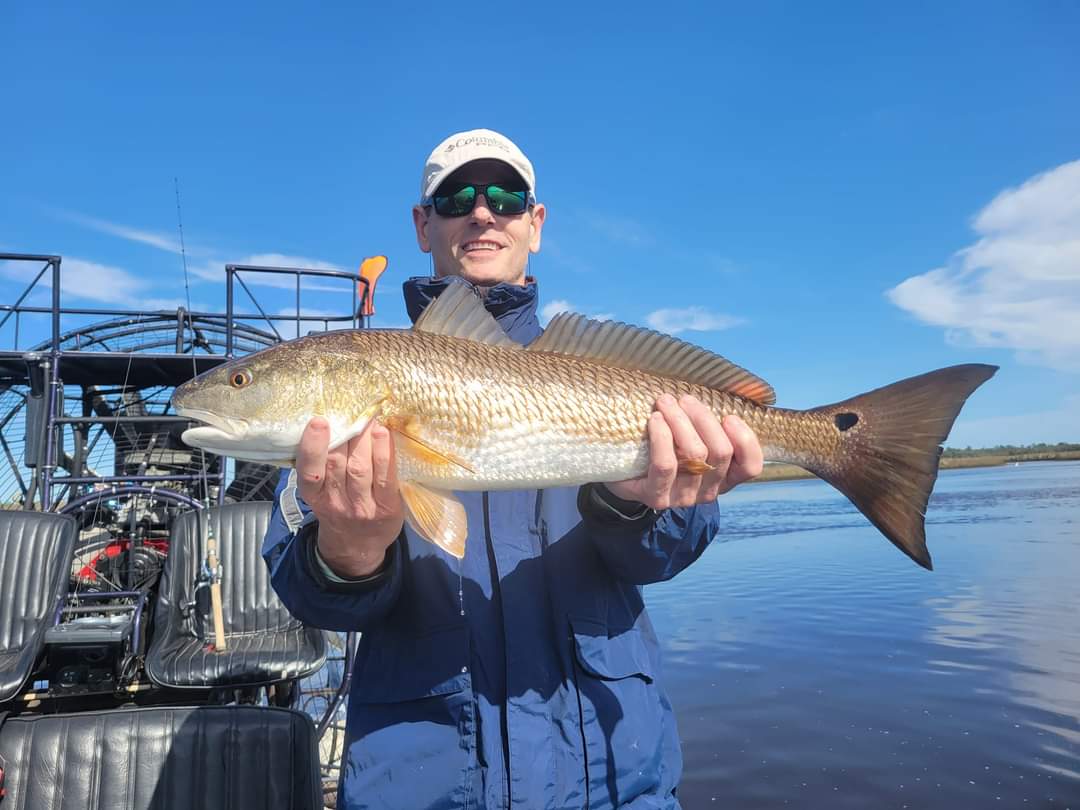This summer pattern is shaped by rising heat, sporadic rainfall, and unstable salinity layering. Surface temperatures in the Econfina regularly top 86°F by midday, climbing higher in static backflows and wind-sheltered creeks. Rainfall has come in pulses, forcing large freshwater loads into the system, then stalling, which allows salinity to push back in through the bay mouth. The net effect is an estuary that resets daily.
Upper river zones are holding little to no bait due to oxygen collapse and temperature saturation. Fish are instead staging near transition zones where saltwater wedges in during incoming tide and gets trapped near bottom structure. Every movement pattern is now based on which areas are receiving clean, oxygenated water and where bait gets funneled by the tide. Identifying that alignment is the only way to locate active fish.
How Flow Conditions Control Feeding Zones
Incoming Tide Dynamics
The first two hours of the incoming tide carry oxygen-rich, cooler water across shell points and grass edges. This accelerates feeding. Predators stage on the down-current side of these formations, particularly along outer bars where water wraps and pushes bait into soft-side eddies.
- Redfish hold in 1.5 to 3 feet of water on the back edge of marsh points. They use current deflection zones to ambush shrimp and minnows pinned to grass walls.
- Flounder sit flat on the bottom along shell transitions, especially where incoming flow rises slightly over submerged lips.
- Glass minnows concentrate just behind these points in tight rafts. Their surface shimmer and quick directional flicks signal feeding zones.
Surface signs: directional boils peeling off point tips, clean green water pushing across darker backflow zones, linear surface tension trailing along grass edges.
Outgoing Tide Structure Pressure
On the fall, water exits with force through tight creek mouths and cuts, creating rapid acceleration zones. Fish respond best in the first half of the drop, while water still carries salinity and oxygen from the bay.
- Trout suspend along the edge of feeder creek mouths, especially where submerged grass or shell drops occur at 3 to 5 feet. They sit on the upstream side of these drops, facing into flow.
- Juvenile tarpon and snook have begun staging deeper in tidal cuts, reacting to bait flushed from narrow tributaries. These species remain more active during mid-morning when tide and wind align.
Key signs to look for: surface slicks that move cross-current, isolated bait bursts, or glassy surface sections that form just outside the main boil. These show where water is bending or lifting off submerged structure.

Salinity Lines and Layered Water Behavior
Brackish layering is highly unstable and changes location every tide. Identifying salinity edges is critical for understanding where fish are willing to stage.
Where Salinity Meets Structure
Rain runoff forms visible boundaries where dark freshwater hits the cleaner bay water. This line tends to settle over mid-depth grass flats and along oyster tongues extending from the shoreline.
- Redfish work the saltier side of the line, holding just off bottom on the lee side of hard edges.
- Flounder bury along the downflow slope of oyster bars, especially where silt overlays sand.
Watch for:
- Sharp color transitions with distinct lines
- Oil sheens that ride the break
- Suspended bait flicking in narrow bands across the seam
Present lures across the boundary, not along it. Fish are keyed into cross-directional movement and respond better to retrieves that traverse the salinity shift.
Bait Response to Salinity Collapse
When runoff overwhelms the system, bait pulls out quickly. You may still see surface activity, but it lacks the urgency of a predation zone.
Indicators of low oxygen or poor salinity:
- Suspended bait hovering with no directional motion
- Glass minnows breaking apart and reforming without fleeing
- Shrimp pulsing vertically with no flush or panic movement
In these zones, predators are absent or sluggish. Relocate toward cleaner water with visible flow interaction.
Bait Movement and Predator Reaction
Glass Minnows
These bait schools now dominate the open bay and the mouths of major creeks. Their movement is shallow and closely tied to light angle and tide.
- On incoming tide, they stack against grass walls and shell flats facing the flow
- Under low wind, they form broad surface slicks
- When pressured, they flick in sharp lateral bursts
Predators like trout and reds stage beneath the slick, not inside it. Throw soft jerkbaits or suspending plugs that run just under the visible bait mass. Hits come on the pause as the lure drops below the minnow layer.
Shrimp
Shrimp movement is restricted and episodic. They flush only under strong outgoing flow and only from deeper creeks with clean bottoms.
- Redfish hunt them at the base of grass drains
- Snapper hold under structure near creek mouths, hitting shrimp that get pulled under
Use popping corks with shrimp imitations when signs include:
- Sudden flushes in fast current
- Small directional swirls inside tight flow seams
- Baitfish abandoning the zone just before shrimp movement starts
Mullet
Mullet schools are large and mobile. They drift along wind-sheltered grass lines and cut across major flats during incoming tide.
- Jacks and overslot reds tail these schools, but only hit when bait is moving fast
- Topwater is effective only when wind chop lifts slightly and bait is skimming high in the water column
Cast ahead of the leading edge and retrieve across the current seam, not directly into the school.

Structure and Layered Habitat Behavior
Redfish
They are patterning along the backside of structure during early tide stages, especially when current wraps across grass points and creates slack pockets on the far side.
- Depth: 2 to 3 feet
- Orientation: nose into current, positioned behind grass or shell lips
- Response: reaction to small paddletails or slow-wake plugs during moderate flow
As light increases and tide slows, they drop into potholes or leave entirely. When this occurs, relocate to shell tongues with deeper edges where residual flow remains.
Trout
Spread across mid-depth grass beds with current intersections. They hold above the grass line but below surface bait layers.
- Best during moderate incoming with clean water
- Suspended behavior shuts down once wind dies or clarity drops
Cast up-current and let suspending lures ride the flow across the grass. Twitch occasionally to trigger strikes.
Jacks
Highly aggressive along major current lines, especially where creek outflows cut into the bay.
Visual cues:
- Fast, wide boils with surface surge
- Linear surface tension running down current
- Tight pelagic-style bait movement ahead of the activity
Use fast-retrieve spoons or hard plastics, matching retrieve speed to current. Pause lures near pressure bends or visible eddies.

Flounder
Static but precise. They hold on sloped bottom at the base of structure facing moderate flow.
- Found on leeward sides of grass islands
- Triggered by dragged soft plastics or fluttering jerkbaits bounced across the bottom
Strikes are subtle and require a set followed by steady pressure. Move on if no signs after several casts.
Interpreting the Pattern and Making the Most of the Summer Shift
The summer pattern across the Econfina River and Apalachee Bay has become fully dependent on real-time conditions. Fish are no longer using structure by default. They are concentrated only where moving tide delivers oxygen, salinity remains intact, and bait is pressed into zones that create vulnerability. Areas that produced yesterday may collapse today if the push weakens, runoff spreads, or thermal pressure overtakes a creek. Every productive stretch of water now forms through alignment between movement, quality, and terrain.
Those shifts are not hidden. You will see them in the way a surface slick curls behind a bar, how a color break holds shape across a point, or when a bait line tightens along grass and moves with clear direction. These are not loose indicators. They define where fish are staged, how they are feeding, and what kind of approach will draw a strike.
Because this pattern forms and fades quickly, timing access to the system is critical. Econfina Sporting Club is located inside that window, with immediate reach to the tide shifts and structural transitions that still support a working pattern. If you’re planning to fish based on what the water is doing now instead of what it used to do, reserve your stay with us while these conditions are still in play.


